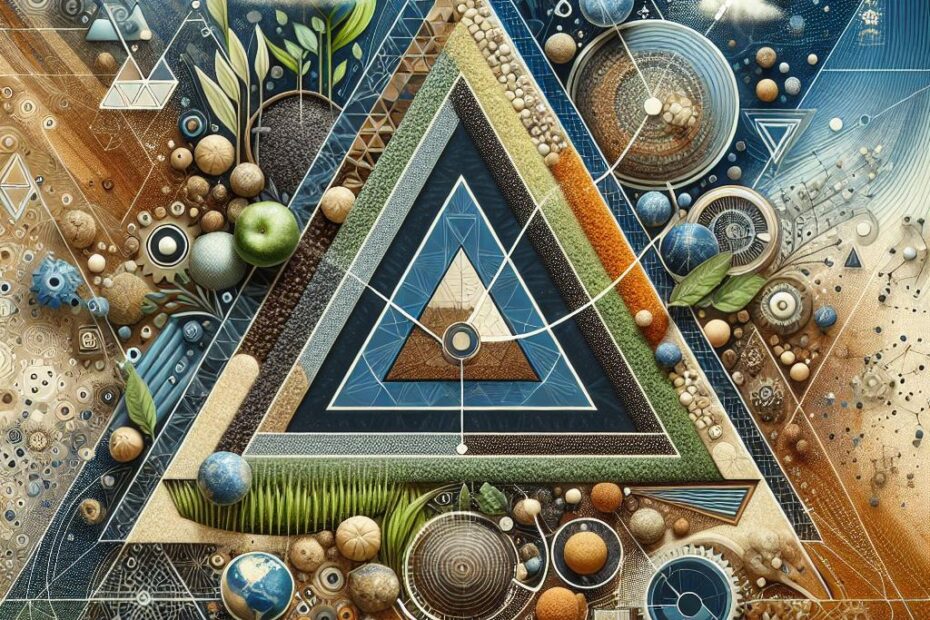Understanding Soil Texture Triangle: How to Use It for Better Gardening
When it comes to gardening, the soil you plant your seeds in plays a crucial role in the success of your plants. One key component of soil that often goes unnoticed is its texture. Soil texture refers to the size of the mineral particles that make up the soil, and it greatly influences the soil’s ability to hold water and nutrients, as well as the growth of plant roots.
One tool that can help you understand and determine the texture of your soil is the soil texture triangle. In this article, we will delve into what the soil texture triangle is, how to use it, and its benefits for your gardening endeavors.
What is a Soil Texture Triangle?
The soil texture triangle, also known as the USDA soil texture triangle, is a graphical representation of the proportions of sand, silt, and clay in a soil sample. These three components make up the mineral particles in soil, and their proportions determine the texture of the soil.
The soil texture triangle is divided into different regions, each corresponding to a specific soil texture classification based on the proportions of sand, silt, and clay. By using this triangle, you can easily determine the texture of your soil and make informed decisions about how to improve it for optimal plant growth.
How to Use the Soil Texture Triangle
Using the soil texture triangle is a straightforward process that involves following a few simple steps:
Step 1: Collect a Soil Sample
Before you can determine the texture of your soil using the soil texture triangle, you need to collect a soil sample from your garden. Take care to collect a representative sample that includes soil from various areas of your garden.
Step 2: Determine the Proportions of Sand, Silt, and Clay
Once you have your soil sample, you will need to determine the proportions of sand, silt, and clay in the sample. There are various methods for doing this, including the soil ribbon test and the soil sedimentation test.
Step 3: Use the Soil Texture Triangle
Once you have determined the proportions of sand, silt, and clay in your soil sample, you can use the soil texture triangle to find the corresponding texture classification. Simply locate the point on the triangle where the three proportions meet, and you will find the texture classification of your soil (e.g., sandy loam, clay, silty clay, etc.).
Benefits of Using the Soil Texture Triangle
There are several benefits to using the soil texture triangle in your gardening endeavors:
- **Precision:** The soil texture triangle provides a precise way to determine the texture of your soil, allowing you to make informed decisions about how to improve it.
- **Better Plant Growth:** By understanding the texture of your soil, you can tailor your gardening practices to meet the needs of your plants, leading to better growth and productivity.
- **Improved Water and Nutrient Retention:** Different soil textures have varying abilities to retain water and nutrients. Knowing the texture of your soil can help you adjust your watering and fertilizing practices accordingly.
Practical Tips for Using the Soil Texture Triangle
Here are some practical tips to help you make the most of the soil texture triangle in your garden:
- **Regularly Test Your Soil:** Soil texture can change over time due to various factors. It’s important to regularly test your soil to ensure that you have up-to-date information.
- **Adjust Your Soil Amendments:** Based on the texture classification of your soil, you can adjust the types and amounts of soil amendments you use to improve its texture.
- **Monitor Plant Health:** Keep an eye on the health and growth of your plants, as this can provide valuable insights into the quality of your soil.
Conclusion
The soil texture triangle is a valuable tool for gardeners looking to better understand and improve the texture of their soil. By using this tool, you can make informed decisions about how to enhance the quality of your soil, leading to healthier plants and better garden yields. Incorporating the soil texture triangle into your gardening routine can help you achieve success in your gardening endeavors.
